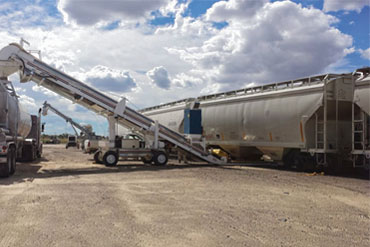

The biggest benefit of pairing NGL recovery with LNG production comes from the commonalities between the two facilities, as both require much of the same operating and utility units, including gas treating, power distribution systems, control systems, flares, water treatment systems and other ancillary infrastructure. In addition to significantly reducing capital costs, this methodology allows for much faster market penetration and has the potential to expand LNG opportunities into nontraditional markets and allow producers to exploit gas sources that were, at one time, considered uneconomical. With micro-LNG facilities, on the other hand, LNG production is distributed primarily within local markets where demand is high. With larger LNG plants, exports are transported internationally via carriers to end users. Small-scale, or micro, LNG facilities provide such distribution options when paired with natural gas processing plants. As a result, LNG production is now migrating into the midstream arena in an effort to shorten the market distribution chain and broaden LNG availability, leading to more selling options for producers. With the current market and infrastructure in many regions of the world, however, this supply chain limits LNG distribution to a relatively small radius. Upstream and midstream providers have typically focused on recovering NGL and producing a residue gas stream, while downstream providers have focused on using that gas stream to produce LNG. Why couple LNG with NGL recovery? Traditionally, NGL recovery and LNG production have been viewed in the marketplace as two separate segments. Conversion kits can be added to diesel engines to allow them to burn LNG in lieu of, or in combination with, diesel. More recently, LNG has been used as a clean-burning alternative to gasoline and diesel in the trucking, railroad and marine markets. When demand for power increases, the supply of natural gas from the pipeline may be insufficient. LNG is also used for peakshaving in natural gas power plants. As a result, they often cost hundreds of millions of dollars to develop and require a large footprint, making them impractical in many areas of the world. These facilities are designed to produce extremely large volumes of LNG.

The majority of today’s LNG production takes place at large-scale liquefaction plants. By reducing the cost required to liquefy gas, the price of LNG can be decreased and passed on to operators as increased market share and/or profits. Liquefaction makes up approximately 30%–40% of the total cost. The price of LNG is largely determined by three factors: the price of natural gas, the cost of liquefaction and the cost of transportation. As the industry continues to shift away from large, multi-ton LNG facilities in favor of small-scale (micro) production operations that can better accommodate local markets, optimization of these systems will become increasingly important. Pairing LNG production facilities with NGL recovery plants has proven to be an effective way of delivering LNG to market. In light of this growing demand, the need for new and more efficient methodologies that can help producers deliver LNG to market quicker and cheaper has also increased. Overall demand for natural gas throughout the globe is expected to rise steadily in the coming years. However, this trend has been somewhat hampered in recent months as the price differential between crude oil and natural gas has narrowed.

In recent years, the use of LNG as a clean-burning alternative to coal, gasoline and diesel has grown dramatically. Beck, Audubon Companies, Denver, Colorado Pair NGL recovery with LNG production to improve processing economicsĭ.


 0 kommentar(er)
0 kommentar(er)
